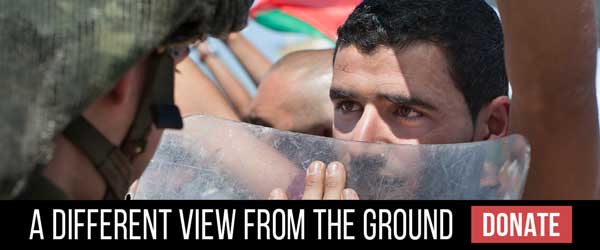Residents of Sheikh Jarrah are bracing for a new wave of evictions, ten years after Israeli settlers attempted to take over Palestinian homes in the embattled East Jerusalem neighborhood.
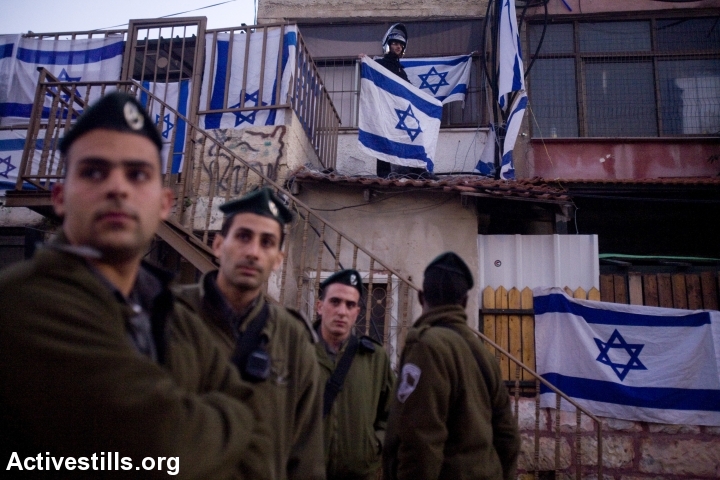
The Sabag and Hamad families are refugees from Jaffa and Haifa, respectively. Expelled from their homes during the 1948 war, they have been living in the occupied East Jerusalem neighborhood of Sheikh Jarrah, an area that was at least partially owned by Jews before the war, since 1956. They were resettled there by the Jordanian authorities and UNRWA, the UN agency responsible for providing humanitarian assistance to Palestinian refugees.
Although their original homes in Haifa and Jaffa are still standing, members of the Sabag and Hamad families cannot reclaim ownership over them. Soon after becoming a state, Israel enacted the Absentee Property Law, which transferred Palestinian refugees’ property into the hands of the state. It does not apply to Jewish families that fled their homes in 1948. They can reclaim their properties, like those in Sheikh Jarrah.
For over a decade, Jewish settler groups have been exploiting that lopsided legal situation to try and kick Palestinian families out of their homes in East Jerusalem.
“This is a political issue, it’s not an issue of justice,” says Saleh Diab, one of the neighborhood’s most prominent activists. “Everything we managed to stop 10 years ago will now resume.”
In 2009, after three families were evicted from their homes in Sheikh Jarrah, Palestinian and Israeli activists started a protest movement that eventually mobilized thousands to demonstrate in the neighborhood every week against both evictions. The struggle led to pressure in the media and the international community and the evictions came to a halt. Since then, Israeli authorities have evicted only one family in Sheikh Jarrah.
Now, with the backing of Trump, Diab fears Israel’s right-wing government and settler groups will have the green light to resume their attempts to take over more homes. Two weeks ago the Supreme Court rejected the Sabah and Hamad families’ appeals against their evictions. Residents of Sheikh Jarrah fear that could lead to a new wave of evictions affecting as many as 11 families and 500 people.
“We were shocked,” says 74-year-old Muhammad Sabag. “We waited for a decision for a long time, but we were not ready for such a blow.” Sabag’s building currently houses 40 people under threat of eviction.
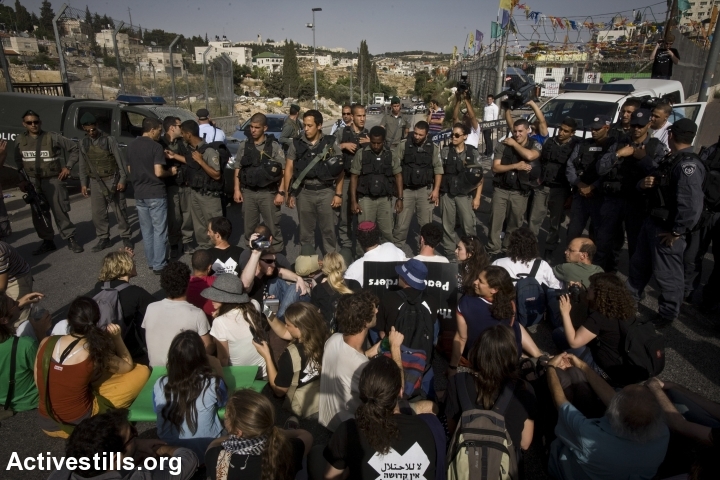
Sabag, whose family has lived in the building for nearly 65 years, says he doesn’t understand how authorities can just throw them out of their homes. “There is no law that allows them to just kick someone out of his house after 65 years, even if he is not the landlord,” he says, as we sit in the family home of Saleh Diab. Alongside him are Aaref Hamad, Nabil al-Kurd and Abed al-Saqafi, three representatives of other families who are in the middle of a legal struggle to fight their own evictions. All of them took part in the protests against the last wave of evictions nearly 10 years ago.
‘Everyone is afraid’
To understand the conflict in Sheikh Jarrah, you need to go back over a century. At the end of the 19th century, the Sephardic Community Council and the Ashkenazi Community Council purchased the tomb of Shimon HaTzadik, a historical figure from the era of the Second Temple. The councils also bought land surrounding the tomb. There, they built a small Jewish neighborhood, which was abandoned by its Jewish residents when Jordan conquered the area in 1948.
A few years later, between 1953 and 1956, Palestinians who fled from areas under Israeli control were resettled there by Jordanian authorities and the UN. When Israel occupied East Jerusalem in 1967, the area around the tomb was handed over to Israel’s Custodian of Absentee Property, which, in 1972, returned ownership of the land and homes there to the two Jewish organizations that bought it almost 100 years prior.
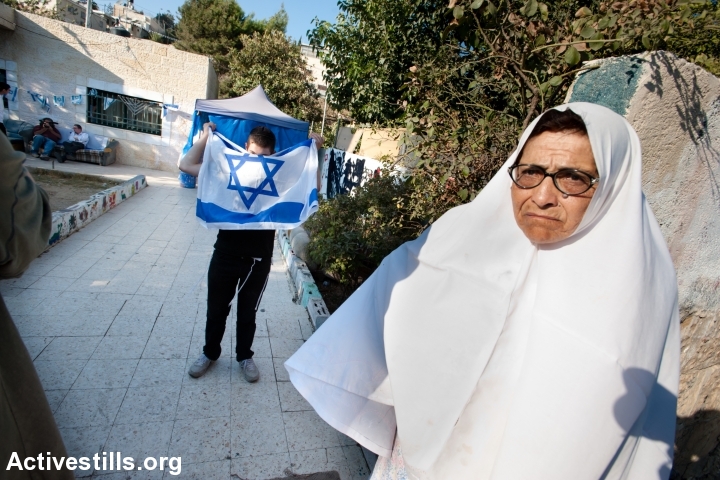
The Palestinian families who had been living there since the 1950s were allowed to stay.
In 2003, a U.S.-based company named Nahalat Shimon purchased the land from the two Jewish community councils. It is unclear who owns Nahalat Shimon. What is clear is that it is trying to put Israeli settlers in homes currently occupied by Palestinians. In 2008, the organization filed a lawsuit seeking the eviction of the Sabag and Hamad families. Four years later, the Jerusalem Magistrate’s Court ruled that the families would have to leave their homes. The families appealed the decision, but to no avail.
The eviction proceedings began only in 2008 and 2009 — 35 years after Israel’s Custodian of Absentee Property handed over the land to the Jewish councils. “Ottoman archives show that the land claimed by the Jewish committees is not the same as the area on which the homes of the residents stand,” says attorney Sami Arsheed, who represents the residents. “However, because of the statute of limitations, it is impossible to use this as evidence in court. It is very cruel to the residents.”
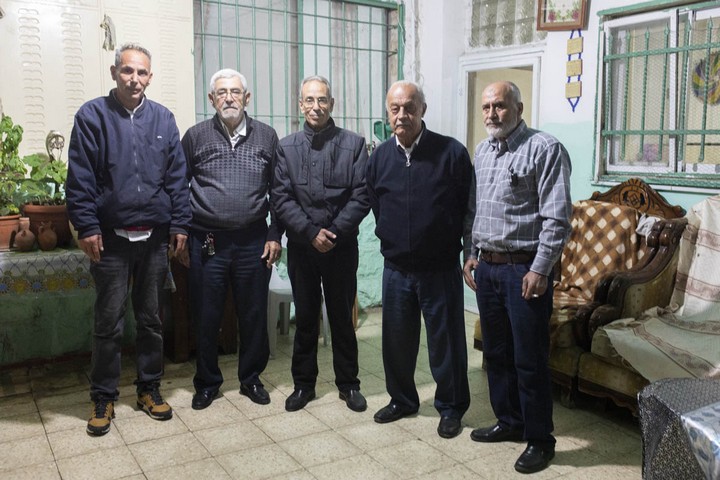
The homes in which the Palestinians live do not belong to the Jewish councils, since they were built in the days of Jordanian rule. Nahalat Shimon claims ownership over the land itself. Yet in the previous evictions, the buildings themselves were also handed over to the settlers. The Palestinian families were not compensated.
Since the ruling, the families have been living under immense pressure. “We do not know when the eviction will take place,” Sabag says, “but everyone is afraid.”
Diab says he is worried about the effect it will have on his children: “It has an impact. They were small the last time around, but now they understand everything.”
‘A second Nakba’
My conversation with the five men whose families are facing eviction jumps back and forth between 1948 and the present day. “If [the former Jewish owners] can demand their homes here, why can’t we demand our homes from before 1948 [in Israel]?” asks Diab. “Everyone here has documents to show that the homes belong to our family. Why can a Jew return his property in Jerusalem and we cannot return to ours?”
“My father had a restaurant on the water in Haifa,” says Nabil al-Kurd. “In 1948, they imprisoned him for nine months. Then we came to Jerusalem and lived in the Old City and Wadi Joz. In 1956 we arrived here with 27 other families,” al-Kurd recalls. “They are trying to perpetrate a second Nakba against us. We settled here with permission, we have good neighbors, there is no reason to kick us out of Jerusalem.”
Many of the families evicted in 2009 were dispersed. Due to the high cost of living and the difficulty of finding apartments for rent in Jerusalem, some of them live in Palestinian neighborhoods beyond the separation wall.

“Ever since Trump said last year that Jerusalem belongs to the Jews, we have been feeling the change,” Diab adds. “The settlers are working quickly to evict us before the American administration changes.” Almost a decade ago, Secretary of State Hillary Clinton called the evictions “unfortunate and provocative.” Residents believe pressure by the Obama administration eventually led Israel to freeze the evictions.
“How will we go back to the days of protests?” Diab wonders. “The police today are like the police in [apartheid] South Africa. Israelis who stood alongside us were fired from their jobs because of their views.”
And yet, the residents of Sheikh Jarrah are hoping for a new protest movement. They hope the weekly demonstrations — which significantly dwindled over the years — will grow, and the international community will once again take notice. “Like in Khan al-Ahmar, they are trying to expel an entire community and turn us into refugees for a second time,” says Diab.
A version of this article was first published in Hebrew on Local Call. Read it here.


